Forward Folds: Padangustasana & Pada Hastasana
Padangustasana
- Pada: Foot
- Angusta: Big Toe
- Asana: Pose
Essence of the Asana: This is primarily a hamstring stretch. In all forward folding postures, flex the hips, lengthening the hamstrings, rather than flexing and bending the spine. From Samasthiti:
Inhaling, jump your feet hip-width apart (perhaps 8-10 inches). Lift and lengthen along the inside edge of the spine, letting the belly become taut and long as you grow slightly taller.
Exhale and fold crisply at the hip creases, by the rotation of the pelvis alone, with a slow exhalation. Fold leading with the sternum, rather than the head. Continue looking forward, not down, as you fold. These steps ensure that the back is kept as long as possible. Grasp the big toes from between the big toe and 4th toe with the first two fingers of each hand (palms face towards one another). If necessary, bend the knees to reach the toes but keep the back straight. Inhale, straighten the arms, look forward, and press the sternum down towards the toes, lift the crown of the head and sitting bones towards the ceiling, attempting to make the back concave, and rotate the hips forward as much as you can (you will feel the hamstrings lengthen).

With the exhalation, start folding from the sacrum first, then fold the navel down onto the thighs.
If you’re unable to bring navel to thighs with straight legs, take this modification by bending your knees slightly.
To express this pose more deeply, hold this flatness of the back and the rotation of the hips, exhale and fold forward fully, allowing the crown of the head to descend towards the toes. Extend the elbows directly to the sides.
Alignment
The entire spine should remain as neutral as possible, a completely neutral spine position is not possible nor desirable, but making the effort of bringing the spine towards neutral will be very beneficial for the posture, lengthening and elongating the spine and engaging the supporting fascia to protect the spine. You should feel taut in the upper body, not drooping or hanging forwards.
The hips will have a tendency to fall back behind the ankles. Counteract this tendency and challenge your balance by bringing the hips forward, directly over the ankles. You may feel that you will fall forward as you shift your weight towards your toes; engage the leg muscles, pressing down through the toes and heels to find an active balance. Shifting the weight forward into the toes also has the effect of stretching the muscles of the lower leg and foot more thoroughly. The legs ought to feel solid and stable, like tree trunks. It may help to imagine bending and straightening the knees at the same time, so you can feel the muscles wrapping the thigh hugging in towards the bone.
Shoulders should remain in neutral position, but gravity will pull your shoulders down around your ears if your upper back is relaxed, bringing them to droop around the ears. Counteract this tendency by lifting the shoulder blades towards the hips, keeping the upper back strong and broadening the space around the neck.
Pressing the big toe mounds down firmly into the mat, try to lift your feet up with the strength of your arms. Nothing visible will happen because your legs are much stronger, but you’ll feel a nice widening inside the wrist, and it will help engage the muscles throughout the arms and shoulder to bring the upper body into a healthy position. The hands and wrists will have to relax slightly to feel a stretch and length. Press into the big toes to tack the fingers down, then lift from the elbows so you feel a stretch in the forearm and wrist.
The chest should remain broad and open, with the sternum pressing forward through the line of the shoulders. Do not allow the chest to become concave, with the upper back rounding and the arm bones rotating forward over the chest.
Common Mistake:
In this position, tightness in the hamstrings has compromised forward-folding mobility. Hands can still reach the toes, but now the bend is coming from the waist rather than the hips. The weight of the upper body is hanging from the lumbar vertebrae, causing the discs to bulge upwards. Over time, poor posture in forward folds can cause lower back pain or a disc bulge. This is especially dangerous for those with previous lumbar spine or hamstring injury, as the area is already weak, with very limited flexibility and strength. Most people who find themselves in this position chronically round their backs (kyphosis), and it is important to use this posture to correct rather than reinforce poor spinal posture.
To correct this, bend the knees into Variation #1:
Bend the knees enough that you can straighten your back, rotating the pelvis anteriorly (rotate the the sitting bones up overhead) while still feeling a stretch in the hamstrings. How far you can come down does not matter — if you feel a lengthening of the hamstrings while keeping your spine straight, you are doing the posture correctly.
Another common mistake is to keep the legs passive.
When the hamstring muscles are not eccentrically contracting (lengthening while engaged), they are more vulnerable to tearing. A sign that the hamstrings are being stretched improperly is that sensation is concentrated at the ischial tuberosities (sitting bones) rather than throughout the whole leg and upper body. Back out a bit and don’t force yourself deep into the stretch. Take the time to discover a feeling of grounding through the feet and innervation of the legs rather than simply flopping forward.
Pada Hastasana
- Pada: Feet
- Hasta: Hands
- Asana: Pose
‘Feet on Hands Posture’
From Padangustasana: Inhale, lifting halfway as you straighten your arms and look forward. Pull gently with the hands to reset the spine and broaden the arc of the collarbones.
Press the sternum towards the toes, rotate the hips forward (try and get another few degrees of rotation relative to the previous posture). Release the toes, then slide the palms beneath the soles of the feet. Exhale, fold forward as you extend the elbows to the sides and bring the forehead close to the shins.
Alignment:
Alignment is the same as Padangustasana. If you can’t quite get the palms all the way under the feet so that the toes touch the wrists, start with the fingertips and move the hands farther under the feet as you gain flexibility. This challenges the flexibility of the shoulder in a slightly different way, so be sure that you keep some focus on broadening the space around the neck and taking the shoulderblades (scapulae) up towards the hips, resisting gravity.
Pressing the weight of the body down through the forefoot can help to counterbalance the demands most of the series places on the wrists.
As discussed above, bend the knees as necessary.
Executed properly, these two asanas are very effective at increasing the length of the hamstrings and the mobility of the sacrum.
Be careful not to get into bad habits — poor posture here will only reinforce tightness in the hamstrings and has the potential to injure the lower back.

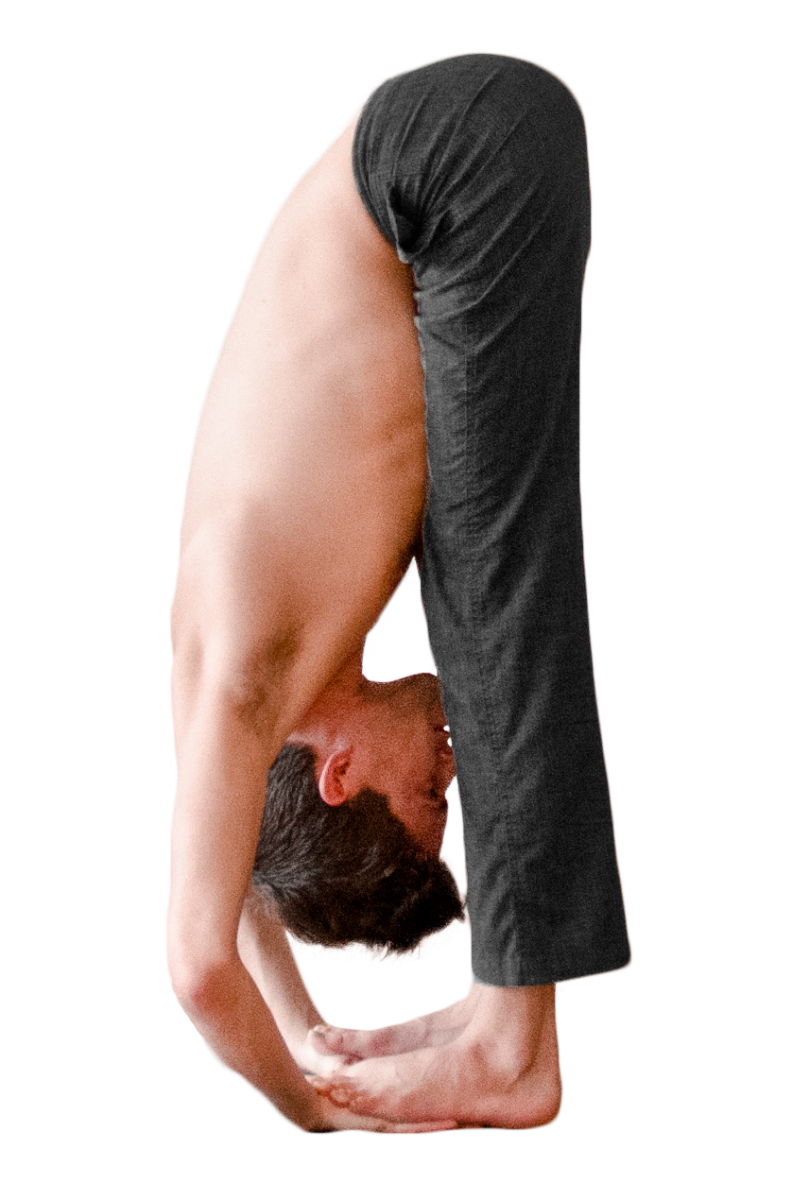
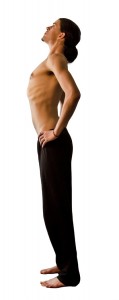


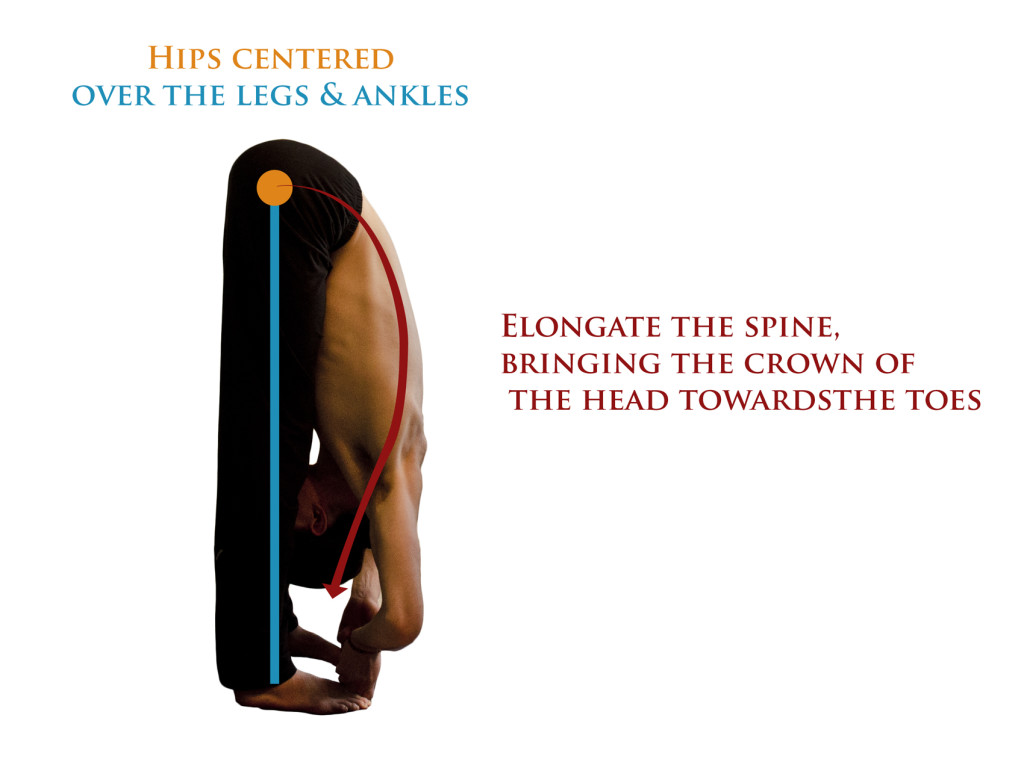

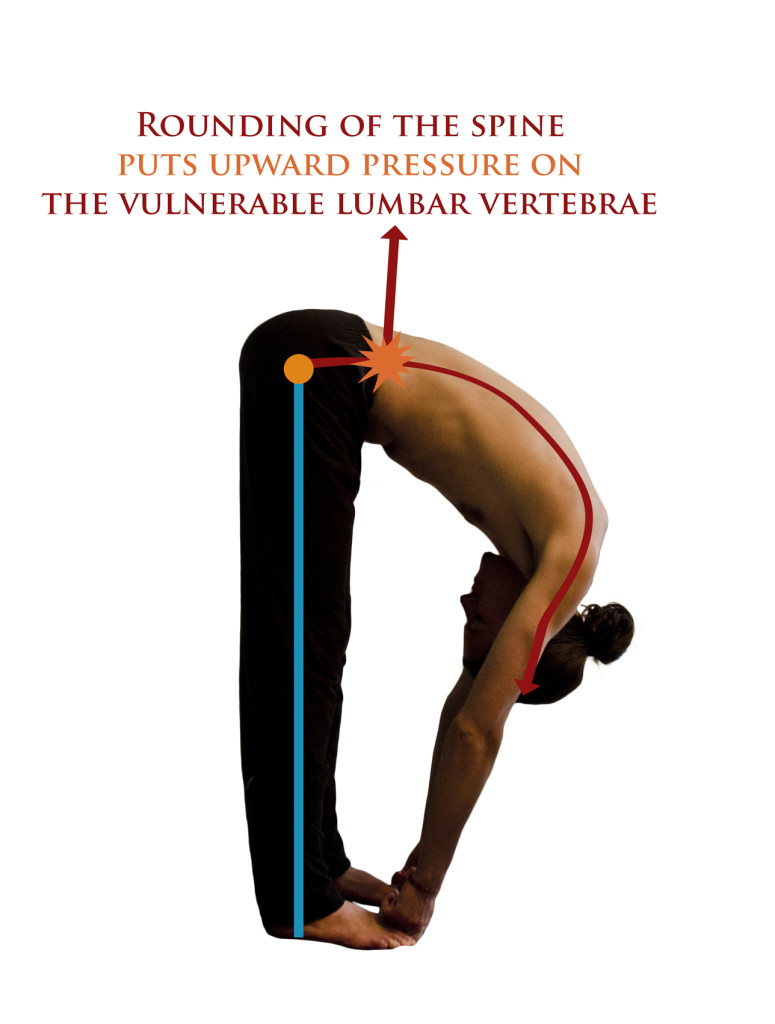

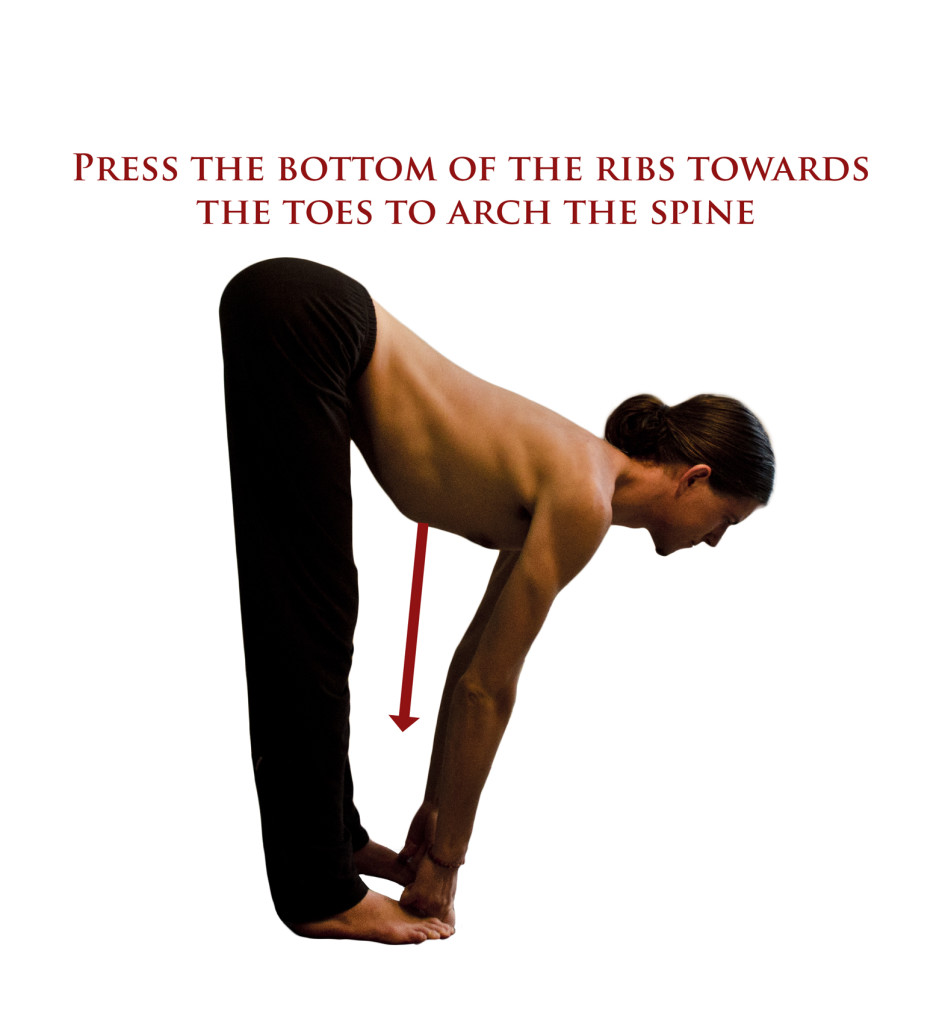

[…] Alignment in forward folding is discussed in further detail in Padangustasana. […]